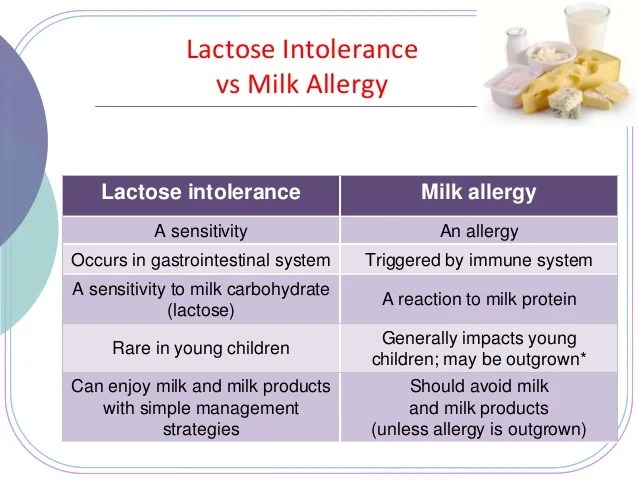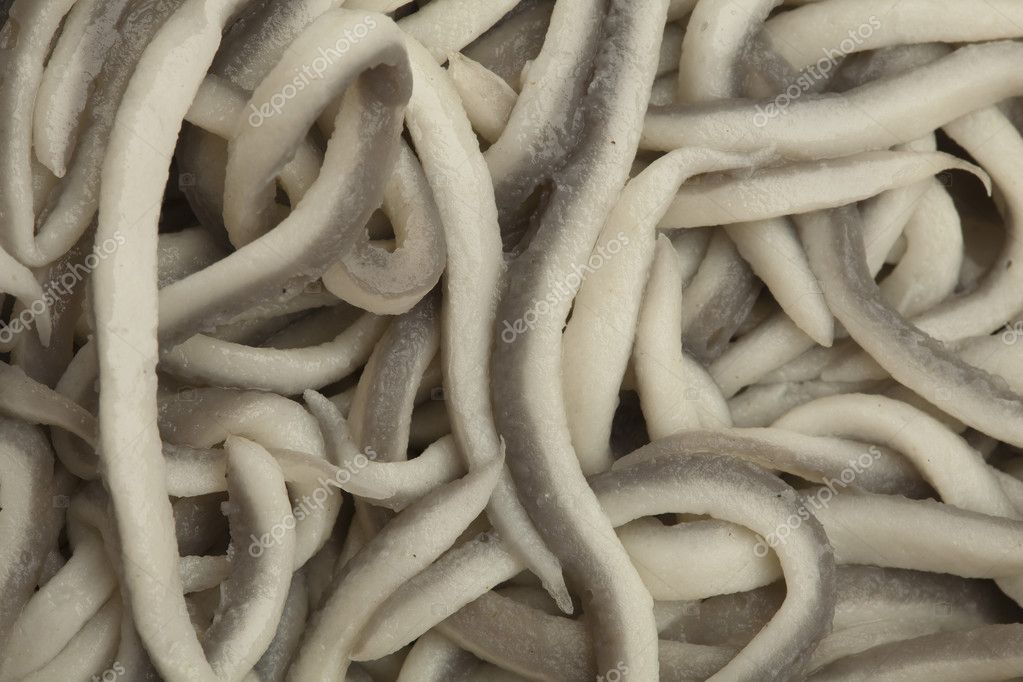Best first foods to make for baby
The Best Baby Puree Recipes - Our 10 Favorite Purees
Just finished your 4- or 6-month well-baby checkup and got the seal of approval to start solids from your pediatrician? If you and your baby are ready for Stage 1 purees, you’re both in for an exciting adventure. There are some amazing baby puree recipes out there, with an endless variety of flavors!
When introducing solid foods to your baby, single-ingredient fruit and veggie purees are the best place to start. Also called Stage 1 baby foods, these purees are served in addition to breast milk or formula and play several important roles for your baby:
- Helping them adjust to something other than breast milk or formula
- Developing tongue control, gumming and swallowing capabilities
- Identifying any food sensitivities or allergies
- Encouraging an early acceptance of varied flavors, colors and textures
To help you and your baby get started on this important phase of discovery, here are 10 of the best first baby puree recipes—listed roughly in the order we’d recommend: first the sweeter orange veggies, then the more bitter green veggies and finally everyone’s favorite fruit. Bon appétit!
Our 10 Favorite Baby Puree Recipes
1. Carrot PureeWith a sweet taste and smooth consistency, pureed carrots are typically one of the most well-accepted first baby foods from 4–6 months of age. High in beta-carotene (which turns into vitamin A in the body), carrots help keep little eyes healthy.
Parent tip: If your baby doesn’t seem on board with the carrot puree, it may be the concept of solid food itself that’s confusing. Help your baby learn how to eat solids by giving them a chance to examine it themselves; dab some on the high chair and let them play around before offering it on a spoon.
2. Yam or Sweet Potato PureeSweet potatoes and yams are not the same, but when it comes to starting solids, they may as well be! Both are good sources of vitamin A, B6, C and E. These nutrients contribute to healthy eyesight and immune system function.
Parent tip: Yams and sweet potatoes are great to prepare in bulk.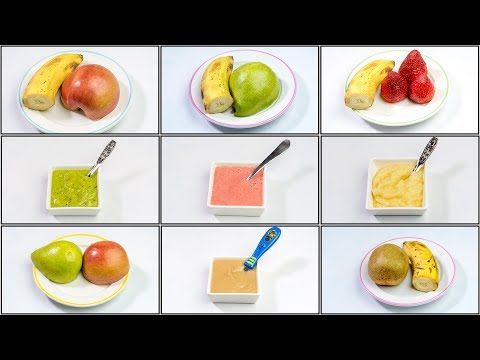 Simply set your oven to 450°F, pierce each sweet potato a few times with a fork and place in the oven on a baking sheet lined with aluminum foil for approximately 50 minutes. When you take them out, the skin will peel right off, and the insides will be perfectly mashable! To extend the life of your mash or puree, batch some out and put it in the freezer. When you’re ready to use it, simply place in the fridge overnight, and you’ll have perfect puree by morning.
Simply set your oven to 450°F, pierce each sweet potato a few times with a fork and place in the oven on a baking sheet lined with aluminum foil for approximately 50 minutes. When you take them out, the skin will peel right off, and the insides will be perfectly mashable! To extend the life of your mash or puree, batch some out and put it in the freezer. When you’re ready to use it, simply place in the fridge overnight, and you’ll have perfect puree by morning.
Butternut squash and acorn squash are packed with folate, calcium and vitamin A, an antioxidant that aids with vision and fights free radicals. Plus, their sweet taste and smooth texture make them an instant favorite for many babies!
Parent tip: You can make raw squash easier to cut by microwaving the entire squash on high for about 2 minutes. The skin and flesh will be much smoother, allowing you to smoothly slice through. Then scoop out the seeds and roast or boil before pureeing.
In terms of green veggies, peas are one of the best first baby purees to start with, as they provide interesting texture and taste but aren’t bitter. Peas are also high in vitamin A, vitamin C, vitamin K and protein, making them a great source of many important nutrients for your baby’s early development.
Parent tip: Because they’re such a starchy vegetable, even pureed peas may be too densely textured for very young babies. If your baby is having trouble with the thickness of the puree, use breast milk, formula or water to thin it out.
5. Green Bean PureeAnother hit with babies, green beans are a good source of vitamin K, vitamin C and manganese, which play an important role in a healthy immune system, eyesight, blood clotting and bone development.
Parent tip: If you’re pureeing your own green beans, we recommend straining the puree after blending to extract any fibrous parts. The best first baby purees should be soupy enough to drip off a spoon, but thicker than liquid.
Avocados are rich in a variety of nutrients including fiber, vitamin K, folate and vitamin B6. This creamy green fruit is also packed with heart-healthy fats, which are helpful to your baby’s brain and nervous system development.
Parent tip: Look for ripe avocados that are soft to the touch and easy to mash. To see whether an avocado is ripe, check the nubby stem; if it wiggles, the fruit is probably ready to eat! Keep ripe avocados in the refrigerator so they last longer. Once the puree is made, we recommend feeding it to your baby right away to avoid browning and to offer the freshest experience.
7. Apple PureeApples’ sweet flavor makes them another well-accepted option for first baby foods from 4–6 months of age. Along with dietary fiber for digestive health, apples serve up vitamin C, which is known to help fight free radicals.
Parent tip: For an apple puree that your baby will love, try sweeter, smoother varieties such as Pink Lady, Gala or Golden Delicious.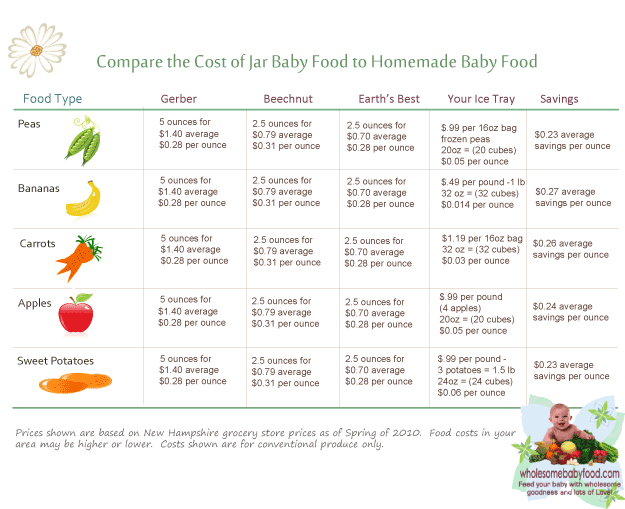 Any apple that bakes well, such as Granny Smith or Fuji, is also a good choice.
Any apple that bakes well, such as Granny Smith or Fuji, is also a good choice.
Like apples, pears also contain dietary fiber and antioxidant vitamin C, helping to support a healthy immune system for your growing baby. Although our favorite is Anjou, babies love the sweet flavor of all kinds of pears!
Parent tip: To introduce a little variety without any added salt, sugar or seasoning, try mixing up how you cook the pears before pureeing. Start with a simple steam or boil and then move onto the richer, more caramelized flavor of baking or roasting.
9. Plantain or Banana PureeThe mild flavor of bananas and plantains is appealing to most babies, and the texture is easy to manipulate. Both of these fruits offer a variety of nutrients, including fiber for healthy digestion, potassium for blood function and antioxidant vitamin C.
Parent tip: Make your own easy banana puree by peeling, slicing and then mashing the fruit with a fork.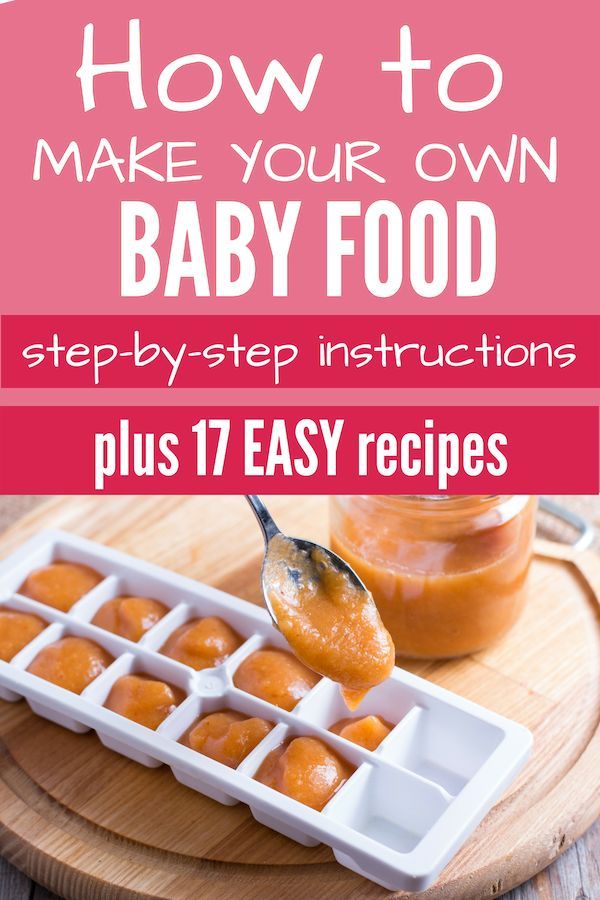 For a thinner consistency, toss the banana in a food processor and add water, formula or breast milk as necessary.
For a thinner consistency, toss the banana in a food processor and add water, formula or breast milk as necessary.
Boasting plenty of vitamins C and A, peaches are delightfully sweet and another one of the best first baby foods. Their bright yellow-orange color is complemented by powerful antioxidants along with a healthy serving of fiber to aid in your baby’s digestion.
Parent tip: Boil peaches for about 45 seconds to soften before blending. If the peaches are ripe enough, you can skip the boiling and the blender altogether and use a fork or potato masher instead.
Give These Baby Puree Recipes a Try!
It may take some time for your little one to first accept and then enjoy the new flavors of these Stage 1 baby puree recipes, but don’t fret! Enjoy the process and be sure to give your baby multiple opportunities to explore the same puree.
Another reason that we love these fruits and veggies? In addition to being some of the best first baby purees, they’re also perfect for layering with new flavors, textures and spices/seasonings as your baby transitions from Stage 1 to Stage 2 baby foods. By laying a foundation of well-accepted flavors, you’ll have fun moving onto more exciting combinations of fruits, veggies, grains and proteins.
By laying a foundation of well-accepted flavors, you’ll have fun moving onto more exciting combinations of fruits, veggies, grains and proteins.
If you have questions about feeding your baby, please reach out to Nurture Life’s child nutrition team at [email protected].
15 Stage One Baby Food Purees (4-6 Months)
Home » Feeding Style » Baby Food Purees » Stage One » 15 Stage One Baby Food Purees
These 15 Stage One Baby Food Recipes will tempt your baby’s taste buds! These simple, homemade baby food recipes are made with nutrient-dense fruits and vegetables with an added pinch of spice that makes these purees out-of-this-world delicious! They’re great for babies 4-6+ months of age!
Medically reviewed and co-written by Jamie Johnson, Registered Dietitian Nutritionist (RDN), and Lauren Braaten, Pediatric Occupational Therapist (OT).
Stage One Baby Food PureesAre you looking to make your baby homemade purees, but don’t know where to start? Does the process intimidate you?
Then you have come to the right place! Here you will find 15 of my all-time favorite starter baby food purees that have been viewed (and made) millions of times by my readers and combined have over 400 5-star reviews!
I would also like to personally welcome you to the wonderful world of baby food, this is a fun (and yummy) club to be in.
Does your baby’s first bite need to be boring?
Of course not!
Baby’s food can (and should be) delicious from the very start!
While it may seem daunting at first, making your own baby food is super easy once you get the hang of it.
And I’m here to walk you through it every step of the way.
First time making homemade baby food? Then I suggest you start this journey by reading my in-depth Guide on How to Make Homemade Baby Food. The detailed guide goes over all the important information such as the best cooking tools to have on hand, safe storage, how to know when baby is ready for solids, how to introduce purees, the best first foods for baby, and so much more! You can also check out my best-selling cookbook for even more information and recipes!
15 Stage One Baby Puree Video
While the recipes themselves are simple, in this video I will show you how to add in a pinch of cinnamon, rosemary, curry, or mint to quickly roasted or steamed fruits and vegetables that enhance their natural flavors. In other words, these are simple purees that I am pretty sure you will want to eat as well!
In other words, these are simple purees that I am pretty sure you will want to eat as well!
What is In Each Puree Recipe
After going through this guide, you will want to check out some (or all!) of the homemade baby food recipes below. Each recipe goes into detail about the:
- produce that is in the puree
- benefits of that produce for your baby
- recipe cooking options
- detailed photos and videos with step-by-step instructions
Reminder: The homemade baby food recipes below are made for babies that want to try the most delicious food from the very first bite! 😋
Helpful ToolsLet’s start with a few of my favorite kitchen essentials to make the best homemade baby food purees! These kitchen tools will help make the process of cooking, blending, and freezing baby food hassle-free. You can find a full list of my favorite baby and toddler food making tools in my online Shop.
- Blender or Food Processor
- Freezer Storage Tray
- Fridge Storage Containers
- Stasher Bag
- Baking Sheet
- Steamer Basket
- Medium Saucepan
- Reusable Pouches
- High Chair
- Suction Bowl and Spoon Set
- Bib with Food Catcher
Learning Resources: looking for the best high chair, cups or spoons for your baby? Then we’ve got you covered! Here you will find How to Find the Best High Chair for Baby, an easy guide on Best First Open Cups for Baby (plus 4 tips when introducing a cup) as well as 3 Tips on How To Spoon Feed Baby (plus – our favorite spoons for purees or BLW).
Frequently Asked QuestionsCan babies have spices in their food?
Yes, yes, yes! Babies can absolutely have spices mixed into their purees from the very first bite. Adding a pinch of spice or herbs to a baby’s food makes it taste better and gives the food additional medicinal properties. Read more here. But as I always say — you do you! If you don’t want to add spices to your baby’s food, you can certainly leave them out. Don’t worry, I give instructions on each recipe card for both.
Adding a pinch of spice or herbs to a baby’s food makes it taste better and gives the food additional medicinal properties. Read more here. But as I always say — you do you! If you don’t want to add spices to your baby’s food, you can certainly leave them out. Don’t worry, I give instructions on each recipe card for both.
What about allergies? Can spices cause an allergic reaction?
My rule of thumb is that unless there is an immediate family member that has a true allergy to a certain spice or food, then introducing your baby to spices at the same time as new food is completely acceptable. Spice and herb allergies in babies and adults are very rare. But remember, it’s always recommended to keep an eye on your baby when introducing any new food or spices.
At what age should I start my baby on baby food purees?
When a baby can start on solid foods is determined by their own rate of development, which generally comes between 4-6 months of age. Some of the developmental milestones babies need to reach to start solids include: if your baby has solid control of their head and neck, if your baby has doubled in weight, and if your baby is reaching for or opening their mouth when you eat (see my guide here). Before you start your baby on purees, you should consult with your pediatrician to make sure your child is developmentally ready for solids.
Some of the developmental milestones babies need to reach to start solids include: if your baby has solid control of their head and neck, if your baby has doubled in weight, and if your baby is reaching for or opening their mouth when you eat (see my guide here). Before you start your baby on purees, you should consult with your pediatrician to make sure your child is developmentally ready for solids.
All of our baby food recipes are designed to enhance the natural taste of the fruits and veggies while keeping as many nutrients intact as possible. In other words, the goal is to make a puree that’s both healthy and delectable.
There are several ways you can cook baby food purees, but the main techniques I use are:
- Steaming
- Roasting
- Simmering
- Raw
Keep in mind, that as long as the produce is cooked until soft, that there isn’t a right or wrong way to cook it for baby food.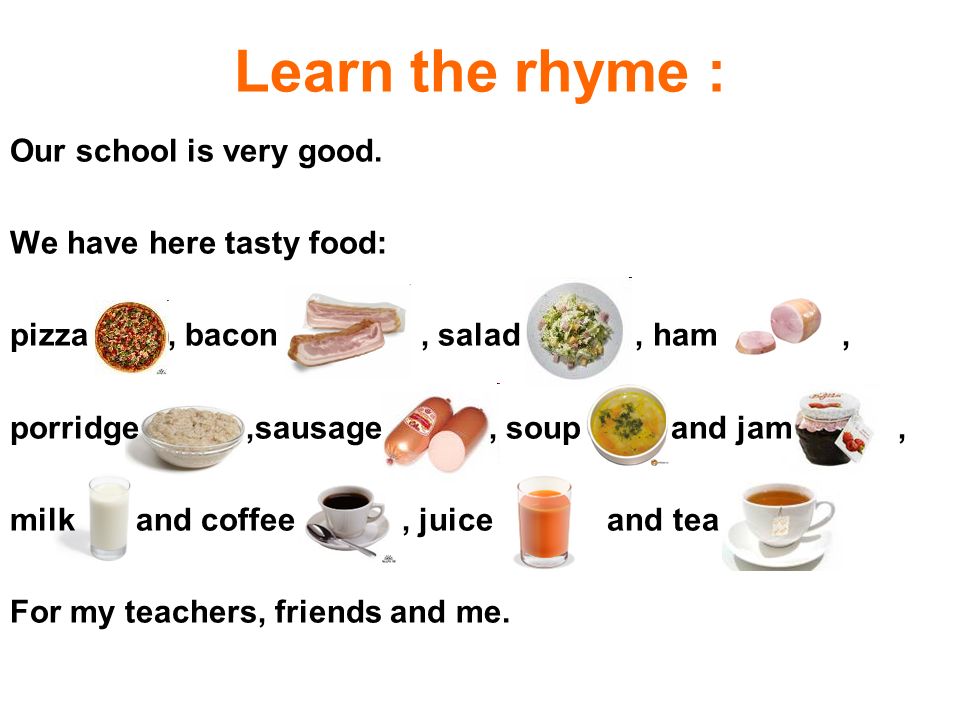
If a recipe for broccoli calls for steaming but you want to roast it because you will already be roasting some broccoli for yourself for dinner, then go ahead and roast the broccoli for your baby’s puree. Play around and have some fun with it!
Adding Spices to Baby PureesIt’s encouraged that you can serve your baby a homemade puree with a pinch of spices or herbs from the very first bite.
Benefits of Spices
- boost and compliment any fruit or vegetable puree
- broaden baby’s emerging palate
- add more flavor and depth into their foods
- decrease picky eating in the years to come
- have medicinal properties in them — they can help with digestive issues, boost brain functions, repair muscle tissues, and so on.
While each puree recipe on this site has a selection of spices or herbs that complement the flavors of the fruit or vegetable in the puree, it’s up to you if you want to add them. You do you! Either way, the puree recipes on this site will be delicious.
You do you! Either way, the puree recipes on this site will be delicious.
Top Spices to Add to Baby’s Puree
- Cinnamon
- Cloves
- Nutmeg
- Basil
- Mint
- Parsley
- Mild Curry Powder
- Fresh Lemon Juice
- Garlic
- Rosemary
Every recipe below has specific instructions on how to store that particular puree, but these are the general guidelines.
How to Freeze Baby FoodYour freezer is about to become your new best friend, allowing you to keep several weeks’ worth of baby purees at the ready. Whenever you make a puree, put several ounces in the fridge for your little one to enjoy that week, then freeze the rest of the batch for your baby to eat at a later date. Please make sure you get it in the puree into the fridge or freezer within 1 hour of cooking to prevent bacteria growth.
- Make a puree.
- Let it cool slightly.
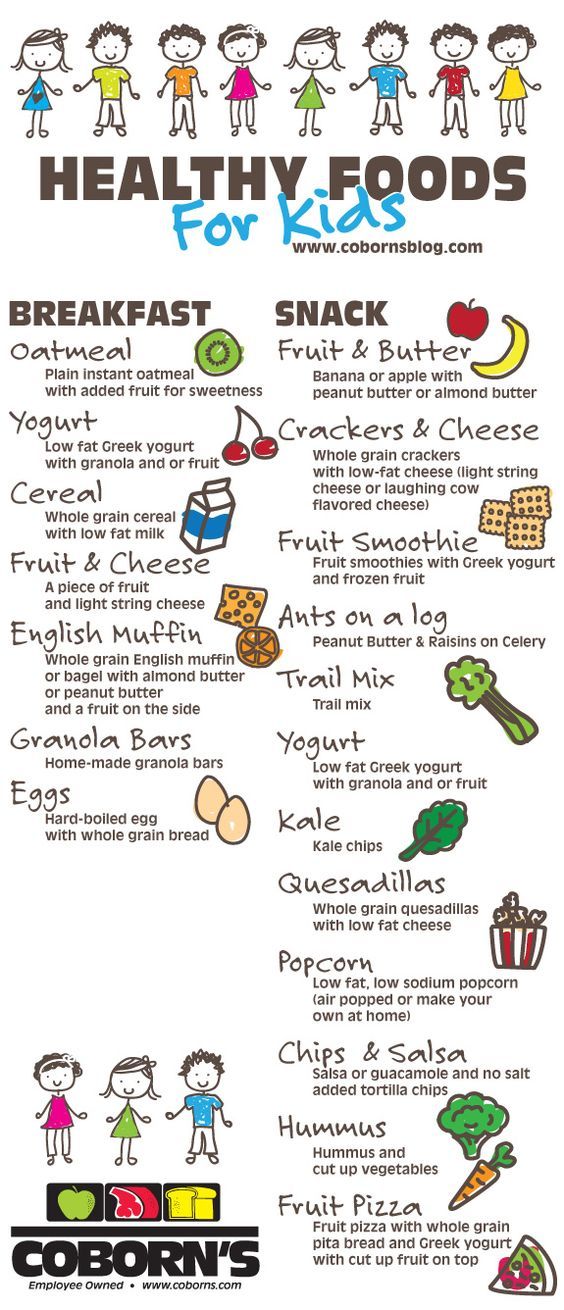
- Transfer the puree to freezer trays or freezer jars.
- Cover the freezer trays with a lid or plastic wrap.
- Label with date and name of puree.
- Place the tray in the freezer.
- Let it freeze for at least 5 hours.
- Take the tray out of the freezer.
- Crack the purees out of the trays.
- Place the frozen purees into zip-lock baggies or stasher bags.
How to Store Baby Food
Purees can be stored for up to four days in an airtight container in the fridge or 4 months in the freezer.
How to Thaw Baby Food
Thawing may seem like a no-brainer, but it never hurts to know your options. There are three different ways to thaw purees.
Microwave- Take the frozen puree cubes that you want to serve out of your freezer.
- Place them in a glass microwave-safe container.
- Microwave in 20-second increments, stirring every time.
- The puree is ready when it is just warm to your touch.

- Grab two clean spoons, one for you and one for your baby, and test your puree before serving.
Heating Tip: To prevent the microwave from unevenly heating the puree, which can leave it with cold and really hot spots and can burn your baby’s mouth, make sure you stir between each interval and taste test it before serving to your baby.
Refrigerator
This one takes the longest time, but it is an excellent alternative to using a microwave.
- Take the frozen puree cubes you want to serve out of your freezer.
- Place the cubes in an air-tight glass container.
- Place the container in the fridge and let the cubes thaw for 8 to 12 hours, usually overnight.
- Do not leave the puree in the container to thaw on the counter or anywhere out of the fridge, as bacteria will start to grow at a rapid rate — which is definitely not recommended.
- Note that the puree will be cold but thawed. So if your baby likes their puree warmed, you’ll have to finish the job using the microwave or stovetop method.

- In a small saucepan, add the frozen puree cubes you want to serve to your baby.
- Over medium-low heat, gently cook the puree until warm, stirring occasionally.
Thawing Tip: Some infants like their puree cold, warm, or really warm, and some will eat it no matter the temperature. You will get to know your baby’s personal preferences as the two of you bond over food.
Feeding Tips
- Make sure baby is showing readiness signs for eating – good control of their head and trunk, sitting with minimal assistance, bringing hands or toys to their mouth, and appearing interested in your food when you’re eating.
- Follow your baby’s lead – when feeding purees from a spoon, sometimes there’s a tendency to keep offering bites past the point of your baby being full. Always follow your baby’s cues for when they are done eating. Turning away from the spoon, closing her mouth, or pushing food away are all signs that your baby is finished with the meal.

- Throwing spoons – is a common phase that all babies go through at one point or another. One of the best ways to handle spoon throwing is to ignore it and keep feeding your baby as usual (with an extra spoon you already have at the table). If your baby ends up also throwing back up spoons #2 AND #3, simply encourage your baby to eat with their hands until they appear to be finished with the meal.
Top Rated Baby Food Purees
Pea Baby Puree (Stage One)
4.91 stars (83 ratings)
A delicious way to introduce peas to baby. Mild peas paired with a fresh hint of mint – a mouth-watering combo!
Get the recipe
Apples Baby Food Puree
4.76 stars (57 ratings)
This Apple Baby Puree recipe is a wonderful first food for baby! A delicious nutrient-dense puree that baby will go gaga over!
Get the recipe
The Best Sweet Potato Baby Food
5 stars (56 ratings)
This Homemade Sweet Potato with Curry Baby Food Puree is a fun and exotic first puree for baby! Great for 4+ months and is completely freezer-friendly!
Get the recipe
Broccoli Baby Food
4. 81 stars (71 ratings)
81 stars (71 ratings)
This Broccoli Baby Food with olive oil recipe is a great way to introduce healthy green vegetables into your baby's diet. A delicious puree full of essential vitamins and healthy fats for growing baby
Get the recipe
Oatmeal for Babies (Stage One)
5 stars (40 ratings)
This Oatmeal Recipe for Baby is made with simple nutrient-dense ingredients in less than 10 minutes, and it's perfect for baby's first bite or added into their favorite fruit or veggie puree. Great for 4+ months and up.
Get the recipe
Avocado for Baby – Puree & BLW
5 stars (16 ratings)
Avocados are a superfood and great first food for babies 6 months and up. Serve them pureed, smashed, or as a finger food for baby-led weaning.
Get the recipe
WeeSprout Baby Food Freezer Tray
My all-time favorite freezer tray! Individual servings pop out easily. The hard plastic lid snaps on with ease and allows for convenient stacking of freezer trays. Dishwasher safe!
The hard plastic lid snaps on with ease and allows for convenient stacking of freezer trays. Dishwasher safe!
View Product
Butternut Squash Baby Food
5 stars (30 ratings)
This homemade Roasted Butternut Squash Baby Food Puree not only contains calcium, folate, vitamins A and C and fiber but it is also a deliciously smooth way to introduce butternut squash to your baby!
Get the recipe
Green Bean Baby Food
5 stars (35 ratings)
Green beans are steamed until just tender, this puree has a mild taste for baby's palette.
Get the recipe
Creamy Mango-licious Baby Food Puree
4.86 stars (28 ratings)
This 5-minute Mango Baby Food Puree is a great way to introduce baby to the magical taste of one of the world's healthiest fruits – MANGOS!
Get the recipe
Pear Baby Puree (Stage One)
5 stars (19 ratings)
This smooth and creamy homemade Pear Baby Puree is a wonderful first puree for baby – easy on the taste buds and great for their growing bodies!
Get the recipe
Peach Baby Puree (Stage One)
5 stars (16 ratings)
Smooth and creamy, this homemade Peach Baby Puree delivers big on taste with naturally sweetened peaches and flecks of vanilla bean.
Get the recipe
Basic Chicken Baby Food
4.42 stars (198 ratings)
This homemade Basic Chicken Baby Food is a great puree to add to any of your baby’s favorite fruit or veggie purees. Great for extra protein and flavor!
Get the recipe
Homemade Baby Rice Cereal
4.88 stars (48 ratings)
Using only 1-ingredient, this Homemade Baby Rice Cereal is a simple and easy recipe to make baby!
Get the recipe
Red Pepper Baby Puree
4.88 stars (33 ratings)
This Red Pepper Baby Puree recipe is a smooth, creamy and naturally sweet puree that is loaded with vitamin A, B6 and C. Great for 4+ months and older (or stage 1 puree).
Get the recipe
More Baby Fooe Purees
- Strawberry Baby Puree
- Blueberry Baby Puree
- Pumpkin Baby Puree
- Rasberry Baby Food
- Banana Puree
- Homemade Quinoa Baby Cereal
Or watch the shortened video here.
Pea Baby Food Puree
- 2 cups peas, fresh or frozen
- 1 medium zucchini, roughly chopped (optional)
- 4 mint leaves, roughly chopped (optional)
Sweet Potato Baby Food Puree
- 2 large sweet potatoes
- 1/4 tsp mild curry powder (optional)
- 1/4-1 cup liquid, (water, fresh breast milk, formula or sodium-free chicken stock) for pureeing
Roasted Banana Puree
- 4 bananas, cut lengthwise
- 1/8 tsp fresh rosemary, finely chopped (optional)
Carrot Baby Food Puree
- 2 pounds carrots, trimmed, peeled and roughly chopped
- 1/4 tsp nutmeg (optional)
- 1/2-1 cup liquid, (water, reserved water, fresh breast milk, formula or low-sodium stock) for pureeing
Apples Baby Food Puree
- 6 apples, peeled, cored and chopped
- 1/2 cup water
- 1/4 tsp cinnamon (optional)
Broccoli Baby Food Puree
- 2 cups broccoli, chopped into small florets
- 1 small white potato, apple or pear, peeled and roughly chopped, roughly 1/2 cup (optional)
- 1 tbsp good quality olive oil (optional)
Butternut Squash Baby Puree
- 1 butternut squash
- 1 tsp fresh thyme, roughly chopped (optional)
- 1-2 tsp olive oil (optional)
- 1/2-1 cup liquid (water, fresh breast milk, formula, low or no-sodium stock or bone broth), for pureeing
Green Bean Baby Food Puree
- 1 pound green beans, fresh or frozen, trimmed
- 1 big pinch fresh basil, cilantro or parsley, finely chopped (optional)
Creamy Mango-licious Baby Food Puree
- 2 cups fresh or frozen mango, deseed, peeled and roughly chopped.
 If using frozen mangos, thaw first
If using frozen mangos, thaw first - 1 medium banana (optional)
- 1 pinch nutmeg (optional)
Pear Baby Food Puree
- 6 pears, peeled and roughly chopped
- 1/8 tsp cardamom or cinnamon (optional)
- 1/4 cup water
Peach Baby Puree
- 3 fresh peaches or 12oz frozen peaches, do not thaw frozen peaches – use frozen
- 1/4 cup water
- 1/2 tsp vanilla bean pod (optional)
- 1 pinch pinch nutmeg (optional)
Basic Chicken Baby Puree
- 1 8-ounce boneless skinless chicken breast or thighs, cubed
- 1 cups chicken or veggie stock, low-sodium or sodium-free
- 1 tsp dried parsley (optional)
Homemade Baby Rice Cereal
- 1 cup brown rice, I prefer organic short grain
- 2 cups water for cooking
- 1-2 cups of liquid for blending, (water, fresh breastmilk or formula)
Red Pepper Baby Puree
- 2 red bell peppers, deseeded and roughly chopped
- 1/2 cup white potato, apple or pear, peeled and roughly chopped
Oatmeal for Babies
- 2 cup water
- 1 cup old fashioned oats
- 1/2 tsp chia seeds (optional)
- 1/2 tsp hemp seeds (optional)
Avocado for Baby
- 1/4 avocado
- 1 tsp breast milk, formula or water
Pea Baby Food Puree
In a medium saucepan, bring 2″ of water to a boil over medium heat.
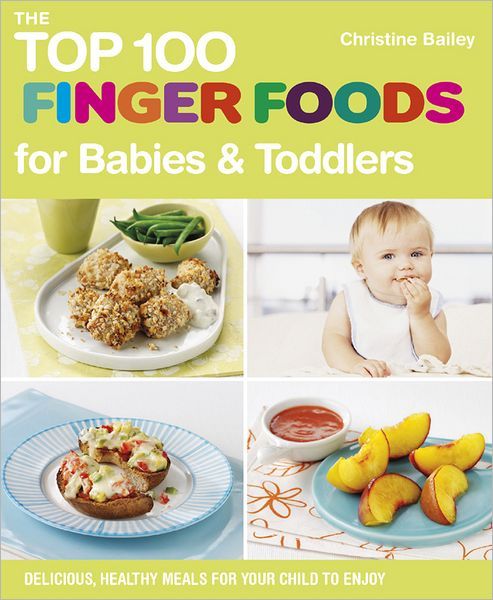 Place the zucchini in a steamer basket, and place over boiling water. Cover and steam for 5 minutes.
Place the zucchini in a steamer basket, and place over boiling water. Cover and steam for 5 minutes.Add in the peas, and steam for an additional 3-5 minutes. Reserve steamer water. Let cool slightly.
Add the zucchini, peas and mint leaves to a blender or food processor and puree for 1 minute or until you have achieved the desired texture. If the puree is too thick, add in 1/4 cup of the reserved steamer water until you have the right consistency.
Note on Zucchini: while this is a 2 vegetable starter puree, zucchini allergies are very low, so I added it to this recipe to give the peas a mild taste and smoother texture. You can completely leave them out if you prefer. Just steam the peas as directed.
Sweet Potato Baby Food Puree
Heat oven to 400°. Line baking sheet with tin foil, parchment paper or a silicone mat.
Wash and dry the sweet potatoes.
 Prick with a fork in several places and then place the sweet potatoes on the baking sheet. Bake for 45 minutes – 1 hour or until a fork can easily prick the sweet potato. Let sit until cool to touch.
Prick with a fork in several places and then place the sweet potatoes on the baking sheet. Bake for 45 minutes – 1 hour or until a fork can easily prick the sweet potato. Let sit until cool to touch.Make a cut into the skin of the potato lengthwise and peel away the skin of the potato. Scoop out the sweet potato meat and place into a blender or food processor, adding in the mild curry powder and water.
Puree on high for 1-2 minutes or until smooth, adding in additional liquid in 1/4 cup increments if needed. I had to add in 1 cup of water to the puree pictured. Serve or freeze for a later meal.
Additional Spices: Feel free to use the following spices instead of the curry – 1/2 tsp of cumin, 1/4 tsp of nutmeg, 1/2 tsp of cloves, 1 fresh garlic clove, 1/2 tsp of chopped fresh thyme, 3-4 basil leaves, 1/2 tsp chopped rosemary or even a big pinch of fresh ginger or 1/2 tsp ginger powder.
 Or you can leave out the spices altogether.
Or you can leave out the spices altogether.
Roasted Banana Baby Puree
Heat oven to 325 degrees F. Line baking sheet with parchment paper.
Place bananas on a baking sheet and roast for 10-12 minutes or until golden brown. Let cool slightly.
Place bananas and rosemary into a blender or food processor and puree for 1-2 minutes or until completely smooth. You may need to add additional water, so start by adding in 1/4 cup increments until you get the desired consistency.
Additional Spices: This recipe is also great with 1 tsp cinnamon, 1/2 tsp cloves, 1/2 tsp nutmeg, or for a fun twist, 1/2 tsp mild curry.
Note on Bananas: while any ripeness of bananas will work, I have found that the bananas that are ripe to very ripe tend to work best in this recipe.
Carrot Baby Food Puree
In a medium saucepan, bring 2″ of water to a boil over medium heat.

Place the carrots into a steamer basket, cover and cook for 9-11 minutes or until tender. Reserve steamer water. Let cool slightly.
Place the carrots, nutmeg and 1/2 cup of liquid into a blender or food processor and puree for 1-2 minutes on high, adding 1/4 cup liquid at a time until you achieve the desired consistency. Serve and enjoy, or freeze for later.
Notes on Nutmeg: adding in spices to babies first purees are completely optional, but totally safe. Nutmeg rounds out the acidic taste carrots sometimes have and make this puree taste grounded and full-bodied.
Additional Spices: Feel free to substitute 1/2 tsp ginger powder or 1/4 fresh ginger, 1/2 tsp mild curry powder, 1/4 tsp cloves, 1/2 tsp finely minced fresh chives or 1/2 garlic clove instead of the nutmeg.
Apples Baby Food Puree
In a medium saucepan, place the apples, water and cinnamon.
 Cover and heat on medium-low for 15-20 minutes or until apples are tender. Let cool slightly.
Cover and heat on medium-low for 15-20 minutes or until apples are tender. Let cool slightly.Transfer all of the ingredients into a blender or food processor and blend for 1-2 minutes or until completely smooth. For a chunky puree, quickly pulse the ingredients 10-15 times or until you receive your desired consistency. Serve or freeze for later.
Additional Spices: Feel free to sub in these spices instead of the cinnamon for this recipe – 1/8 tsp of cloves, 1/8 tsp of nutmeg, 1-2 leaves of fresh mint, 1-2 leaves of fresh basil, a pinch of fresh or 1/4 tsp of ginger powder or even 1/4 of coriander for a fun twist.
Apples: you can use any sweet apple in this recipe – Gala, Honeycrisp, Fuji, McIntosh, etc.
Broccoli Baby Food Puree
In a medium saucepan, bring 2 inches of water to a boil over medium heat. Place the broccoli and potato (or apple/pear) into a steamer basket and place over boiling water, cover and steam for 10-12 minutes or until the broccoli and potato are tender.
 Reserve water from the steamer. Let cool slightly.
Reserve water from the steamer. Let cool slightly.Add the broccoli, potato and olive oil into a blender or food processor and puree until smooth, adding the reserved water from the steamer basket in 1/4 cup increments if needed.
Adding In Spices: Feel free to add in 1 tsp of chopped chives, 2-3 mint leaves, 1 tsp of chopped cilantro, 1/2 tsp cumin or a squeeze of fresh lemon juice.
Butternut Squash Baby Puree
Heat oven to 450 degrees F. Line baking sheet with a silicone mat, tin foil or parchment paper.
Cut butternut squash in half, deseed and place flesh side up, skin side down. Optional – Feel free to drizzle the squash with 1-2 teaspoons of olive oil for some added healthy fat.
Bake for 45 minutes or until you can easily prick the squash with a fork. Let cool until you can handle the squash with your hands.

Scrape off the skin and discard. Place the butternut squash into a blender or food processor. Add thyme and puree for 1-2 minutes, adding water in 1/4 cup increments until you have your desired consistency. I had to add 3/4 cup of water to my puree shown below.
Additional Spices: Feel free to sub the thyme for 4 basil leaves, 1 tsp chopped rosemary, 1 tsp ginger powder, or 1 big pinch of fresh ginger, 1/2 teaspoon nutmeg, or even 1/2 tsp of coriander.
Green Bean Baby Food Puree
Fill a medium saucepan with 2” of water and bring to boil over medium heat. Place the green beans (fresh or frozen) into a steamer basket over the boiling water, cover, and cook for 10 minutes or until tender. Let cool slightly. Reserve steamer water.
Transfer the green beans and herb to a blender or food processor and puree for 1-2 minutes or until smooth, adding reserved steamer water in 1/4 cup increments if needed until you reach your desired consistency.
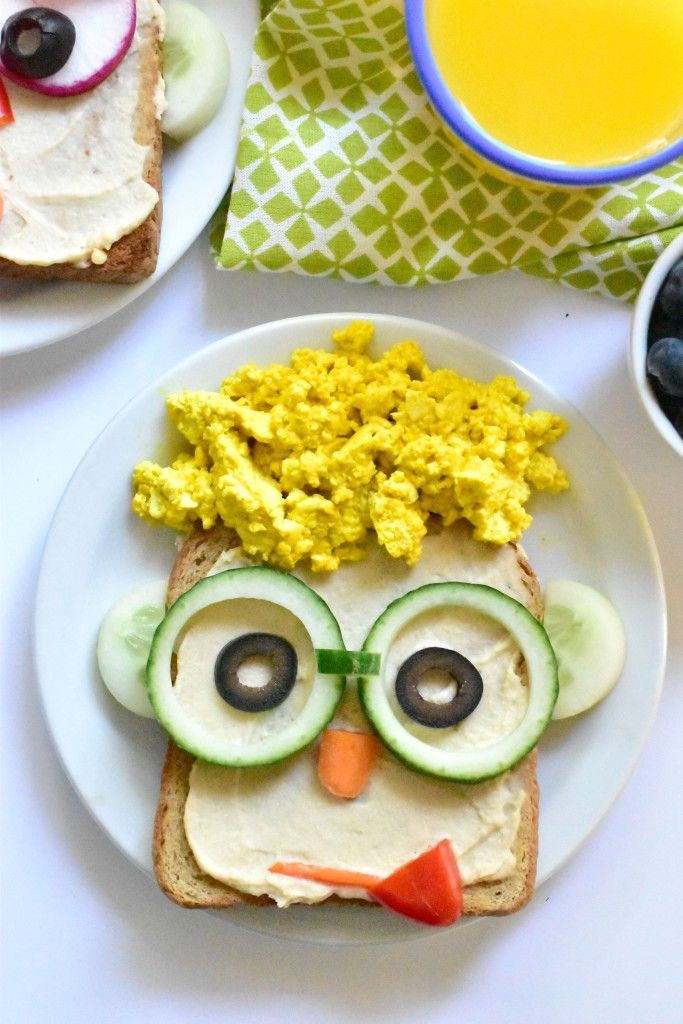
Adding Spices: you can add a big pinch of roughly chopped basil, cilantro, mint, parsley, or chives to this puree before blending.
Creamy Mango-licious Baby Food Puree
Place the mango, banana and nutmeg (if using) into a blender or food processor. Puree for 1 minute or until completely smooth. If your mango is not ripe enough, you might need to add in up to 1/4 cup of water while blending to get the right consistency. Serve or freeze for later.
Mango Tip: I usually find that organic frozen mangos are easier and cheaper to find than fresh organic mangos, but if mangos are in season when you are making this recipe, by all means, you can use fresh over frozen. For fresh mangos, simply peel and chop.
Pear Baby Food Puree
In a medium saucepan, place the pears, cardamon and water, cover and heat on medium-low heat for 10-15 minutes, or until tender.
 Let cool slightly.
Let cool slightly.Using a slotted spoon, scoop the pears out of the saucepan, leaving water behind, and into a blender or food processor. Blend for 1-2 minutes until you have your desired consistency. If your pear puree is too thick, add the leftover cooking water in 1/4 cup increments.
Peach Baby Puree
If using fresh peaches, peel, pit and slice the peaches. If using the fresh vanilla bean pod, cut in half and then slice open lengthwise. Take the back of your knife or spoon and scrape out all of the vanilla bean, reserve.
In a medium saucepan, add the peaches and water, cook over medium-low heat for 5 minutes (fresh peaches) – 10 minutes (frozen peaches). Right before the peaches are done cooking, add in the vanilla and nutmeg (or any other spices you prefer) and stir until incorporated—Cook for 1 more minute.
Using a slotted spoon, transfer the peaches to a blender or food processor, leaving all excess water in the saucepan.
 You do not want to add any additional liquids, or the puree might be too thin. Starting on low and increasing to high speed, puree the peaches until smooth and creamy. Serve to baby or freeze for later.
You do not want to add any additional liquids, or the puree might be too thin. Starting on low and increasing to high speed, puree the peaches until smooth and creamy. Serve to baby or freeze for later.
Basic Chicken Baby Puree
In a medium saucepan, bring the cubed chicken, broth, and parsley to a boil over medium heat. Turn the heat down to low and simmer, covered, for 15 minutes or until chicken is just cooked through. Let cool slightly.
Using a slotted spoon, transfer the chicken to a blender or food processor, leaving the broth in the saucepan. Reserve the broth.
Starting on low and working your way up to high-speed, puree the chicken until you reach your desired consistency, adding in broth in 1/4 cup increments if needed. I had to add in just 1/4 cup of broth to get the consistency seen in this photo.
Extra Healthy Fat: For some extra healthy fat, this puree is also wonderful, with a teaspoon of grass-fed butter (salt-free) added to the blender right before pureeing.

Homemade Baby Rice Cereal
IMPORTANT STEP: Place the rice in a fine-mesh colander and rinse with water until the water runs clear.
Transfer the rice to a medium saucepan and add 2 cups of water. Bring to a boil over high heat, then reduce heat to low, cover with a lid and simmer for 35-45 minutes or until the rice is tender and the water is evaporated. Each batch of rice cooks a little differently, so taste at 35 minutes to see if the rice is tender. Remove the saucepan from the heat and let rest for 10 minutes, covered. If using fresh breast milk or formula for blending, I would remove the lid and let the rice cool for 15 minutes.
Place the rice into a blender or food processor and add 1/2 cup of liquid of choice. Blend for 1-2 minutes on medium-high speed until completely smooth and creamy, adding in the additional liquid in 1/4 cup increments, if needed, until you have your desired consistency.
Red Pepper Baby Puree
In a medium saucepan, bring 2″ of water to a boil.

If using a potato: place it in a steamer basket and steam for 10 minutes before adding peppers, and cooking for another 5-7 minutes.
If using pear or apple: add in the red peppers and apple or pear and steam for 5-7 minutes or until tender. Reserve steamer water. Let cool slightly.
Add in all of the ingredients into a blender or food processor and puree for 1 minute or until completely smooth, adding in a tablespoon of water at a time if needed.
Oatmeal for Babies
In a medium saucepan, bring 2 cups of water to a boil. Add in 1 cup of old-fashioned oats along with the chia seeds, hemp seeds and any spices you are using. Turn down the heat to medium-low and cook the oats for 5 minutes, stirring occasionally, or until all of the water is gone and the oats are soft. Let cool slightly.
Transfer the oats to a blender or food processor and puree for 1-2 minutes, adding water in 1/4 cup increments if needed, until completely smooth.
 I had to add 1/2 cup of water to my oatmeal. You will want the oat cereal to be on the thinner side, so it doesn't become sticky. The oats will continue to absorb liquid as they cool, so you can add more water, fresh breast milk, or formula as needed. Serve to baby or freeze for later.
I had to add 1/2 cup of water to my oatmeal. You will want the oat cereal to be on the thinner side, so it doesn't become sticky. The oats will continue to absorb liquid as they cool, so you can add more water, fresh breast milk, or formula as needed. Serve to baby or freeze for later. Type of Oats: This recipe is for old-fashioned oats: for steel-cut or instant oats, read the full post.
Adding Spices: you can add a big pinch of cinnamon or pumpkin pie spice mix or a smaller pinch of nutmeg or cloves to these oats before blending.
Chia and Hemp Seeds: are added for a nutritional boost, but you can add or omit them if you prefer. You can get both of these at any health food store or online here (chia/hemp).
Avocado for Baby
Age: 4-6 months and up
Yield: roughly 15-25 ounces, depending on the recipe
Freezer Tray
Bumkins Baby Bowl
Blender
Saucepan
Did you make this recipe?
Tag @babyfoode on Instagram and hashtag it #babyfoode!
Pin Recipe Email a Friend
at what age to introduce with breastfeeding and artificial feeding, how to cook at home
When to introduce the first complementary foods
Today there are no hard and fast rules and deadlines for the introduction of complementary foods. Parents should first of all focus on the signs of the child's readiness for complementary foods. Here is what pediatrician, candidate of medical sciences Anna Levadnaya advises to pay attention to , the author of a blog about pediatrics and not only on Instagram.
The child holds his head confidently.
- Can sit with support, meaning it can be placed in a high chair or placed on an adult's lap.
- The kid shows an active interest in food: he is interested in food, he watches what adults eat.
- Breastfeeding or formula feeding is well organized and does not cause any problems.
- The child can put his hand to his mouth, puts various objects in his mouth, such as toys. In this case, the baby chews or champs.
As a rule, all these signs appear in the period from 5.5 to 7.5 - 8 months, but most often around 6 months. All babies develop differently, and one baby may be ready to try his first puree or porridge as early as 5 months, and another at 6 or 7 months will refuse the new food you offer.
What complementary foods a child needs in the first months
Again, there are no strict recommendations and rules. On the contrary, many experts agree that it doesn’t matter which dish you start complementary foods with, the most important thing is to provide the right nutritional interest. In this case, the child will eat all the foods that you offer him.
In this case, the child will eat all the foods that you offer him.
In Russia, it is customary to focus on the following scheme for the introduction of complementary foods. The first to introduce cereals or vegetables, depending on the weight of the child. As a rule, vegetables are first, then cereals, then meat, then fruits, then cottage cheese. In some US states, for example, on the contrary, it is recommended to start complementary foods with meat. But the general message of the recommendations is to maximize the variety of tastes and textures in the first year of life. From vegetables in the first months, you can offer zucchini, cauliflower, broccoli, pumpkin, carrots, potatoes. Of the cereals, gluten-free are the first to be introduced: rice, buckwheat, corn. From fruits - apple, pear, banana, peach and others. From meat - it is better to start with a rabbit, turkey, chicken, veal.
— At the very beginning, complementary foods should be puree-like, says Anna Levadnaya. - It is better to give preference to monocomponent purees so that the baby learns to distinguish between different tastes. As you introduce vegetables and cereals, add butter and vegetable oils to them. If there are no problems with the introduction of complementary foods, it is recommended to use the maximum variety of food textures as early as possible. Starting from 7-8 months, the baby can and should be introduced to semi-solid foods. This is very important for the correct formation of food interest, and for the development of chewing skills, the correct functioning of the tongue, the development of speech, the “tweezer” grip, and the coordination of the work of hands, mouth and eyes. If you do not introduce semi-solid food in time, then there may be problems with the introduction of already solid food, and after a year the child will refuse it completely. Therefore, starting from 7-8 months, the baby can be offered mashed or pureed food, such as a banana. From 8-9months, give the so-called "finger" food: cut into pieces soft fruits and vegetables, such as boiled carrots, potatoes, and put in front of the baby.
- It is better to give preference to monocomponent purees so that the baby learns to distinguish between different tastes. As you introduce vegetables and cereals, add butter and vegetable oils to them. If there are no problems with the introduction of complementary foods, it is recommended to use the maximum variety of food textures as early as possible. Starting from 7-8 months, the baby can and should be introduced to semi-solid foods. This is very important for the correct formation of food interest, and for the development of chewing skills, the correct functioning of the tongue, the development of speech, the “tweezer” grip, and the coordination of the work of hands, mouth and eyes. If you do not introduce semi-solid food in time, then there may be problems with the introduction of already solid food, and after a year the child will refuse it completely. Therefore, starting from 7-8 months, the baby can be offered mashed or pureed food, such as a banana. From 8-9months, give the so-called "finger" food: cut into pieces soft fruits and vegetables, such as boiled carrots, potatoes, and put in front of the baby. By one year, the child is ready to eat solid food from the common table.
By one year, the child is ready to eat solid food from the common table.
How to properly feed your baby
It used to be that complementary foods should be introduced very carefully and gradually, always in the morning, many parents still introduce each product over a week or two, very slowly increasing portions.
- These recommendations are relevant, perhaps, only for the very beginning of complementary foods, the first two or three weeks, - says Anna Levadnaya. - In general, in children without food allergies, the most rapid and varied expansion of the diet is recommended. That is, a new product can be safely introduced every 2-3 days. If you need to breed complementary foods, for example, baby cereals, then it is better to do this with breast milk or formula, and not with cow's. Whole milk is not recommended for children under one year of age.
Also with the introduction of complementary foods, offer your child water, either bottled for children or boiled.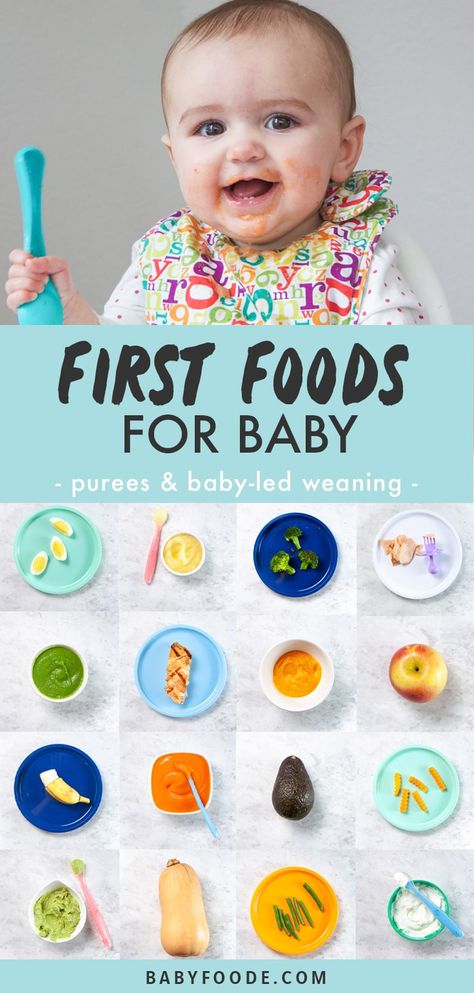 It is recommended to offer water from a cup so that the child learns to drink, and not from a drinking bowl, a bottle with a tube or a pacifier.
It is recommended to offer water from a cup so that the child learns to drink, and not from a drinking bowl, a bottle with a tube or a pacifier.
Monitor the child's well-being, in case of any changes that worry you, consult a doctor.
Complementary foods with natural and artificial feeding
Mothers often wonder if there are differences in the introduction of complementary foods with natural and artificial feeding. In both cases, the recommendations are the same: it is recommended to focus on food interest, signs of the child's readiness for the introduction of complementary foods. Usually, as we have already noted, the baby receives only breast milk or an adapted milk formula up to 6 months. With exclusive breastfeeding, it is not recommended to supplement the baby with water, especially in the first month, when lactation is established. Bottle-fed babies can be offered water.
For both breastfeeding and artificial feeding, it is recommended to offer the baby a new food before feeding, and then supplement it with breast milk or formula.
— It is desirable to keep breast milk or formula in the diet of a child up to a year, — says Anna Levadnaya. - After a year, it is better to leave the bottle completely, gradually reducing the amount of the mixture. After a year, preferably closer to one and a half, cow's milk can be offered if the child is not allergic to its protein. Breastfeeding can be continued as long as it brings pleasure to mother and child.
How to prepare the first complementary foods
Give canned puree and baby cereals or cook it yourself? This question worries many mothers.
“In fact, there is no universal advice here,” says Anna Levadnaya. - Do what is comfortable and best for you. But when choosing food, remember that you must be confident in the products you buy. If you are not sure, buy canned purees, industrial baby cereals. The main advantage of any industrial baby food is that the products from which it is made are tested for the content of pesticides, heavy metals, nitrates and other harmful substances (labeled up to 3 years). If you're cooking yourself, cook with either seasonal fruits and vegetables or frozen ones. It is best to do it for a couple - this is how most vitamins and minerals are preserved. The advantage of homemade products is that we can provide the child with a different consistency, which is very important. But in any case, choose what is more convenient for you, more comfortable, including financially. The main principle is to provide the baby with a varied diet. Alternate between different foods.
If you're cooking yourself, cook with either seasonal fruits and vegetables or frozen ones. It is best to do it for a couple - this is how most vitamins and minerals are preserved. The advantage of homemade products is that we can provide the child with a different consistency, which is very important. But in any case, choose what is more convenient for you, more comfortable, including financially. The main principle is to provide the baby with a varied diet. Alternate between different foods.
If you decide to cook on your own, follow our tips on how to prepare puree and porridge for the first feeding.
Vegetable puree
Zucchini, broccoli, cauliflower, carrots, pumpkin are suitable for the first feeding. The vegetable should be fresh, without dark spots. We clean it from the peel, boil or steam it. Then we pass through a blender. The vegetable should be quite soft to get the most uniform consistency (if necessary, you can add a little boiled water).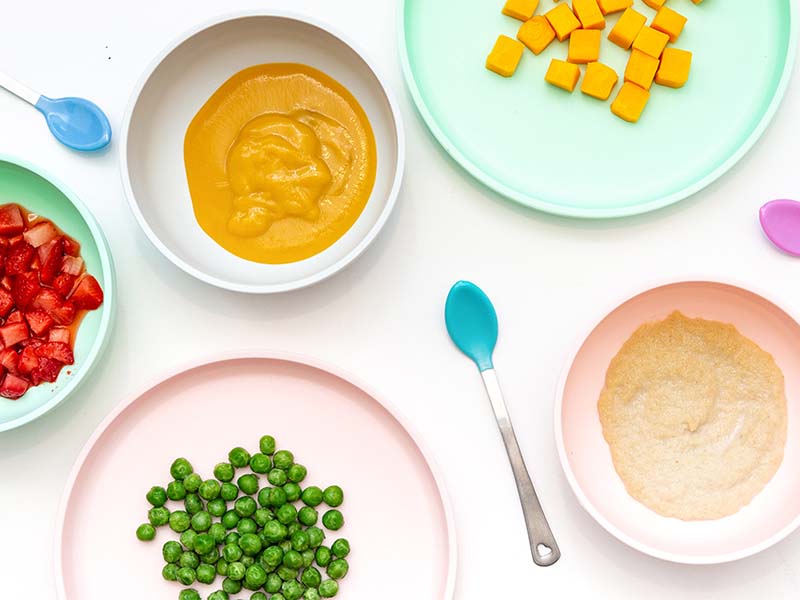 If it did not work out, then additionally the mass can be rubbed through a fine sieve.
If it did not work out, then additionally the mass can be rubbed through a fine sieve.
Fruit puree
To prepare fruit puree for your baby, such as apple or pear puree, fruit must first be baked in the oven, then peeled and passed through a blender or sieve to obtain the most homogeneous consistency. Choose fresh, ripe, seasonal fruits.
Porridges
Soak cereals (for the first feeding, we remind you, this is rice, buckwheat, corn) for 4-5 hours in warm water. Then dry, for example, in a preheated oven. Next, grind the porridge in a coffee grinder into the consistency of flour and cook in water until cooked, this is about 5 minutes. For one tablespoon you need about 50-70 ml of water.
The main mistakes of parents
In fact, there is nothing complicated in the management of complementary foods. Use the guidelines, common sense, and have fun introducing your little one to new foods. With Anna Levadna, we have compiled a list of mistakes that parents often make when introducing complementary foods. Try to avoid them.
Try to avoid them.
In a hurry
It often happens that a child refuses the first complementary foods. Most often, this suggests that the baby is simply not ready for it yet. And the parents, by hook or by crook, are trying to feed him mashed potatoes or porridge. Under no circumstances should you force-feed your baby. It is worth postponing the introduction of complementary foods for one to two weeks.
Give mashed food from a bottle
Do not do this because the child must learn to eat liquid and solid food separately.
Add salt or sugar
These components are not recommended to be introduced into complementary foods for a child under one year old, sugar is better up to three years old.
Only the bottle is used too long
For example, in addition to formula, if the child is on IV, they give water, compote and other drinks from the bottle. The danger is that long-term use of the bottle can reduce the child's desire to eat complementary foods and malocclusion, as well as lead to speech delay and swallowing problems. From 6-8 months, offer your baby to drink from a cup.
From 6-8 months, offer your baby to drink from a cup.
Children are not allowed to play with food
But freedom in dealing with food, the desire to take a spoon, move it around the plate and on the table, touch the food, knead it, and so on, is the key to a successful introduction of complementary foods.
what foods are possible, features of complementary foods
It is no secret that young and not very experienced mothers receive information on the nutrition of an infant, including recommendations on how to introduce the first complementary foods, mainly from two sources: grandmother's stories and from the Internet. Unfortunately, both of these respected sources of information may voluntarily or not voluntarily, but be very mistaken, since grandmothers grew up in a more prosperous time in terms of environmental conditions, and the Internet is littered with various articles that are rarely written by professionals, moreover, they rely either on explicit outdated guides on baby food, or frankly on unverified information.
In this article, I will try to combine the latest scientific data and recommendations on how to introduce the first complementary foods with many years of observations from the experience of a practical pediatrician and an allergist-immunologist.
At what age is it time to introduce the first complementary foods
According to the recommendations of the Research Institute of Nutrition of the Russian Academy of Medical Sciences, the first complementary foods can be introduced from 4.5 - 5 months, regardless of the type of feeding. This is "average". In practice, the choice of when to start introducing complementary foods still depends on the individual characteristics of the child. For example, for a child with widespread atopic dermatitis (diathesis), we will not introduce complementary foods until at least acute skin symptoms, such as cracks, weeping or secondary eczema, have steadily disappeared. Increased dryness and flaking of the skin, of course, require constant application of moisturizers to the skin, but in no case are they a contraindication to the start of the introduction of the first complementary foods.
Another important point when choosing the time to start introducing complementary foods is the dynamics of the child's weight gain. The more intensively the child gains in height and weight, the sooner he may need additional calories, since the energy value of breast milk or artificial formula alone will most likely not be enough for a child who grows faster than his peers by 4 - 5 months. We must not forget that natural products contain a fairly large range of minerals and vitamins, and a mother’s body, alas, cannot be an eternal and bottomless source of useful nutrients, somewhere something will gradually begin to be missed.
In addition, the nature of lactation in the mother has a great influence on the timing of the introduction of complementary foods. If a nursing mother begins to feel a lack of milk, I would prefer to first give her advice on stimulating lactation, and at the same time begin to introduce complementary foods. It will be better than introducing an artificial mixture. But I repeat that the earliest start date for the introduction of the first complementary foods is the age of 4 months, before the child's body is not yet ready, the risk of developing allergies is also high.
But I repeat that the earliest start date for the introduction of the first complementary foods is the age of 4 months, before the child's body is not yet ready, the risk of developing allergies is also high.
So, we agree with you that the first complementary foods can be introduced no earlier than 4 months of a child's life.
First complementary foods: Which foods to choose?
The first complementary foods, as a rule, should consist of vegetable or fruit purees, but in no case juices. Still, juices, even for children, are highly filtered, mainly contain a large amount of organic acids and “light” carbohydrates (that is, sugar, to make it clear to everyone). I will not waste time explaining why juices are harmful to an infant, but I will describe a clinical case from practice.
Parents with an 8-month-old girl came to the reception. Somewhere from 5 months she practically did not gain weight, although before that all indicators were normal. In the analyzes, apart from visible signs of iron deficiency, slightly reduced hemoglobin, no pathology was also detected. The main complaint: "does not eat anything." And when I began to find out what she still eats, it turned out that the child drinks half a liter of juice every day. But porridge or cottage cheese, or mashed potatoes cannot be forced together, they spit everything out. I don't like the taste. And so - for three months. The child, of course, became very nervous, yelling at night, demanding juice.
The main complaint: "does not eat anything." And when I began to find out what she still eats, it turned out that the child drinks half a liter of juice every day. But porridge or cottage cheese, or mashed potatoes cannot be forced together, they spit everything out. I don't like the taste. And so - for three months. The child, of course, became very nervous, yelling at night, demanding juice.
So draw your own conclusions and be careful.
For the first feeding, this is now recognized by everyone, the best dishes are vegetable purees from green varieties of vegetables: zucchini, cauliflower, broccoli. The first complementary foods are introduced, starting with half a teaspoon, in the morning for three days, then gradually increase the amount of the product to 40-50 grams per week. Supplemented with breast milk or formula.
For problems with stools, constipation, it’s good to start introducing prune puree, green apple, you can try pumpkin, even apricot puree, but in no case start with carrots. Beta-carotenoids, which are abundant in carrots, are generally poorly absorbed and can cause allergies in a child.
Beta-carotenoids, which are abundant in carrots, are generally poorly absorbed and can cause allergies in a child.
Second food Porridge or meat?
Even 5 - 6 years ago, we taught students at the medical institute that from 5 - 5.5 months old, an infant should begin to give cereal porridge for complementary foods. This is rice, buckwheat, corn. The first week you can cook 5% porridge: 5 grams of ground cereal per 100 ml of water. Then the porridges are cooked already denser: 10 grams of cereal per 100 ml of water. But now, basically everyone uses instant (soluble) cereals, which are diluted with water according to the instructions on the package. In addition, ready-to-eat liquid cereals are on sale: for example, Bellakt, Frutonyanya, etc.
Why meat? You ask. According to modern recommendations (they really began to change quite often), but in this case I support: if a child has a pronounced decrease in hemoglobin in the blood below 100 g / l by the age of 5 months, it makes sense to start introducing fruit or vegetable purees as a second types of complementary foods - meat purees as a source of the most well-absorbed heme iron. You need to choose from varieties such as turkey, rabbit, lamb. Beef and veal can only be offered to children who did not have red cheeks and diathesis.
You need to choose from varieties such as turkey, rabbit, lamb. Beef and veal can only be offered to children who did not have red cheeks and diathesis.
In the absence of problems with low hemoglobin, feel free to introduce porridge as the second meal of complementary foods, especially if the child is small and does not gain weight very well. In this case, we can recommend breeding cereals with the addition of breast milk or a mixture (Nan, Nutrilon, Celia, Nanny). With mixtures based on goat's milk, parents of children with a predisposition to allergies should be very careful. Goat milk formulas are not the best choice for babies who are allergic or intolerant to cow's milk protein, whatever the internet says. Believe me, there are serious scientific articles by foreign authors, which provided data on a very high frequency of cross-allergy between cow and goat milk proteins in children who were transferred to goat milk mixtures. And I saw it myself in my practice, when a child with dermatitis was transferred to a mixture of goat's milk, there was a clear improvement for a month or two, and then all over again and with a doubled degree of allergic skin damage.
Introduction to fermented milk products
This is the most difficult question. I am sure that most of our grandparents demand that their stupid parents start drinking milk and kefir as soon as possible. In a number of cases, children really start to absorb sour-milk products quite well after 6 months, but before this age I am very careful even with sour-milk Agusha, and even introducing milk or kefir before 6 months is a bad form, believe me, and can lead to very bad consequences for the child. I understand the Western European medical community, which has recently banned its pediatricians from recommending fermented milk products for complementary foods for children under 3 years of age, just imagine!
They (the Europeans) need to do something with their artificial milk mixtures. Even 20 years ago, we did not know other mixtures after the "two", that is, the second formula for children from 6 to 12 months. Then there were formulas for children from 1 to 2 years old, then from 2 to 3 years old, and now there are already mixtures for children up to 4 years old, and I think if this goes on, then until the age of sixteen there will be their own milk substitutes. Dismiss me, I don't think this approach is correct. But the fact is that our grandparents had much better genetics than the generation of our children, alas. In the context of the growth of medical capabilities, genetically determined diseases are also growing, and in this case, intolerance to cow's milk protein, and with every 10 years there are more and more such people among us. But if a child really suffers from an allergy to cow's milk protein or is severely deficient in enzymes, then he will carry this peculiarity through his whole life, and most likely he will not drink milk or kefir himself, and there is no need to force him if he himself won't want to!
Dismiss me, I don't think this approach is correct. But the fact is that our grandparents had much better genetics than the generation of our children, alas. In the context of the growth of medical capabilities, genetically determined diseases are also growing, and in this case, intolerance to cow's milk protein, and with every 10 years there are more and more such people among us. But if a child really suffers from an allergy to cow's milk protein or is severely deficient in enzymes, then he will carry this peculiarity through his whole life, and most likely he will not drink milk or kefir himself, and there is no need to force him if he himself won't want to!
But you are lucky with genetics, and no one in the family has ever had an allergy (which is hard to imagine nowadays), and most importantly, if your child has always had perfectly clean skin, then the first of the dairy products - cottage cheese, you will begin to offer your child with 7 months, kefir - from 10 months.



